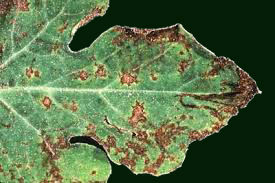
Watermelon - Anthracnose
Symptoms: Anthracnose is a disease caused by the fungus Colletotrichum. Symptoms of watermelon anthracnose can vary and affect any or all aboveground parts of the plant. This can include small yellow spots on leaves that spread and darken to black. ... If the spots spread too far, the leaves will perish
Management : Spray Tricyclazole (0.6g/l) or Carbendezim + Mancozeb (2.0 g/l) or Thiophanate methyl (1.0 g/l)
budnecrosis -wbmv
var-symla-wm oblong
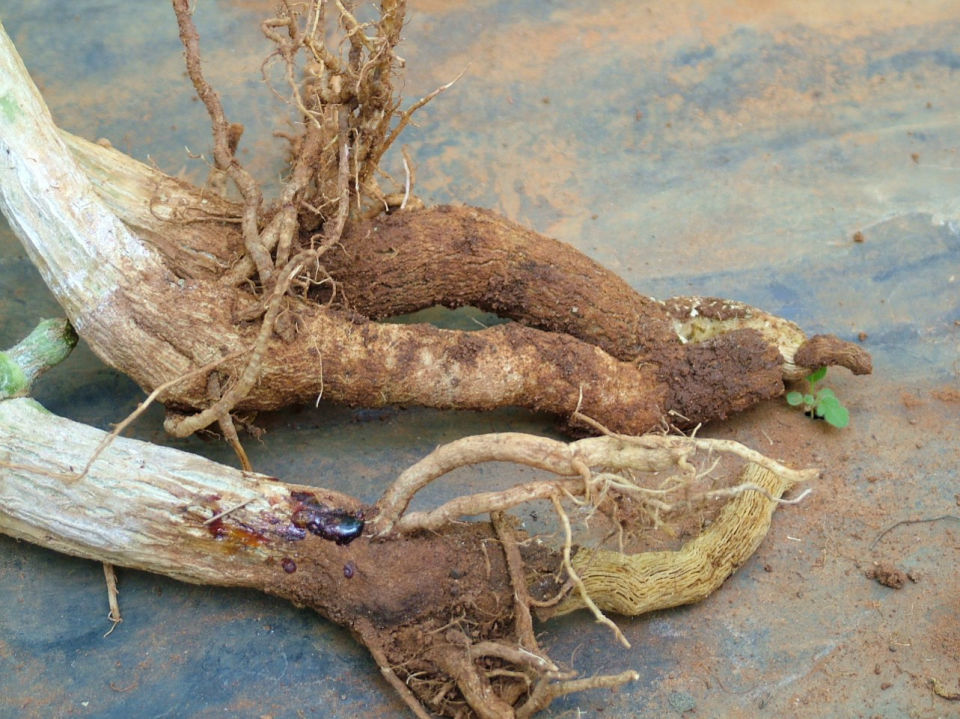
Gummy stem blight
Symptoms: Gummy Stem Blight is a cucurbit-rot disease caused by the fungal plant pathogen Didymella bryoniae (anamorph Phoma cucurbitacearum). Gummy Stem Blight can affect a host at any stage of growth in its development and affects all parts of the host including leaves, stems and fruits. Symptoms generally consist of circular dark tan lesions that blight the leaf, water soaked leaves, stem cankers, and gummy brown ooze that exudes from cankers, giving it the name Gummy Stem Bligh.
Management : Apply Boudreaux paste or copper oxychloride paste or Iprodione + mancozeb (0.2%) or Carbedazim + mancozeb (0.2%) to the infected parts when gummy stem blight is observed.
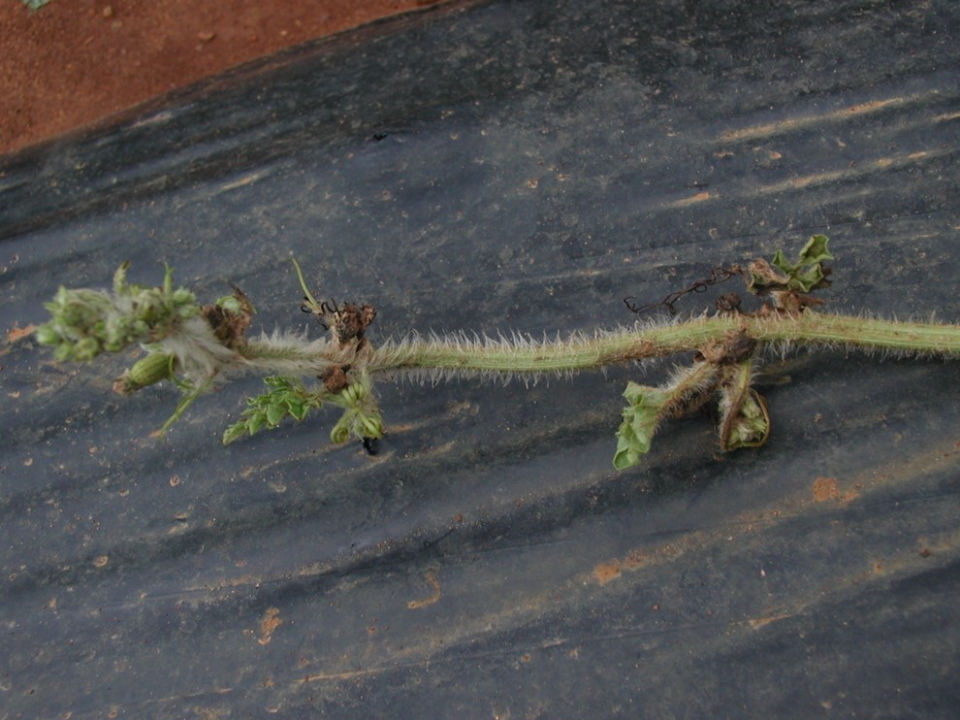
watermelon - WBNV -Watermelon Budnecrosis
Symptoms: WBNV symptoms include mottling, yellowing, necrotic streaks on vines, shortened internodes, stunted plant growth, severe stem and bud necrosis and dieback of the buds. Late season infection results in deformed fruits with necrotic local lesions
Management:
For the management of WBNV in watermelon, an Integrated Pest Management (IPM) has been devised which reduced the thrips population and WBNV incidence to a great extent besides increasing the fruit yield
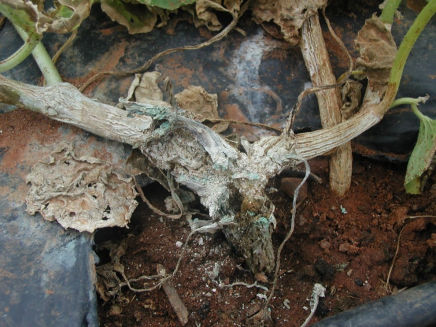
watermelon - Fusarium wilt
Symptoms: Fusarium wilt is one of the most economically important diseases of watermelon. The disease is present worldwide, and it can result in yield losses nearing 100% when severe. The pathogen that causes this disease is the fungus Fusarium oxysporum formae specialis niveum (FON). Formae specialis niveum indicates the version of the pathogen that specifically infects watermelon. There are other formae speciales of Fusarium oxysporum that infect other crops, but they are generally not pathogens on watermelon. Initial symptoms of Fusarium wilt include leaves turning a dull gray-green color and wilting during the heat of the day. Older leaves tend to wilt first, and the wilt can be unilateral, affecting only one or two vines on a plant. Vines that wilt during the day initially recover at night, but eventually the wilt becomes permanent.
Management:
Follow Bio-Intensive Disease Management practices. drenching of Bordaux mixture (1%) Pre packed mixture of Carbendazim+ Mancozeb (2 g/l).
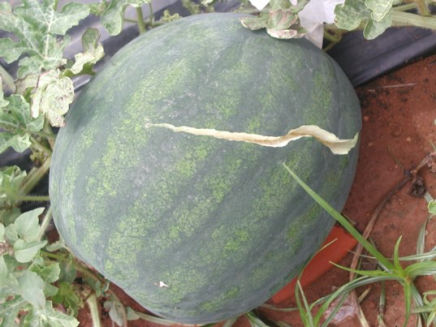
watermelon - Other Phisiological problems
Fruit skin splitting and Cracking
Management:
Low humidity during fruit development has been associated with watermelon fruit cracking
Under water stress ,low R.H would accentuate the effect of drought , and thus tend to promote cracking associated with fruit outer tissue of the fruit.
When soil temperature goes below 16°C along with low RH and combination of these two factors promote severe radial cracking on the fruit.
Stratergy to reduce fruit cracking
Harvesting fruit early
Reducing the irrigation
Protecting fruit from rain by installing temporary covers to minimize water uptake by fruit
Use cultivars resistance to cracking and splitting
Foliar spray of 0.3 % boric acid reduced fruit cracking considerably.
Foliar application of CaCl2 0.4 % solution reduced fruit cracking and splitting considerably.
Maintaining an adequate moisture supply has been found to reduced fruit cracking in watermelon.
Application of growth regulators namely daminozide / prolamine / paclobutrazol 250 ppm as foliar spray at fruit development stage reduce fruit cracking considerably.
Application of Calcium Ammonium Nitrate (CAN) has been found reduced fruit cracking instead of urea or Ammonium Sulphate as basal dose .
Avoid flood irrigation during fruiting stage.